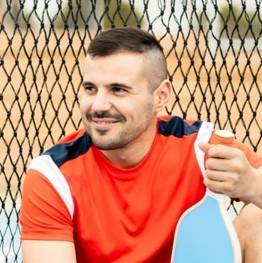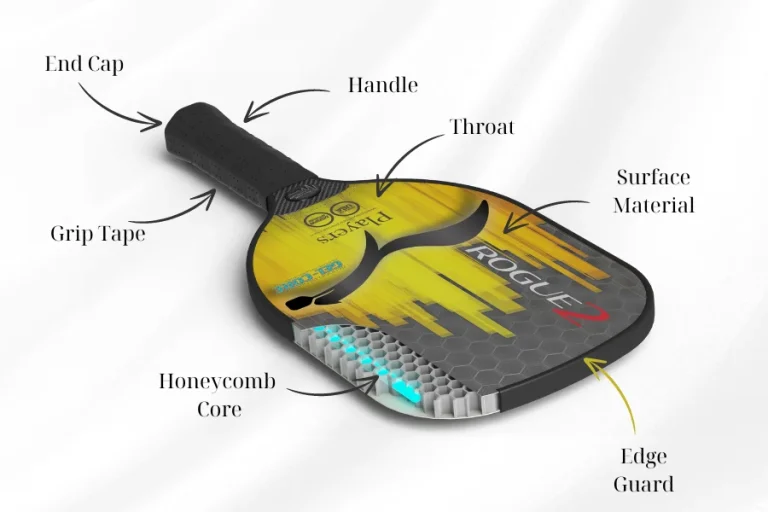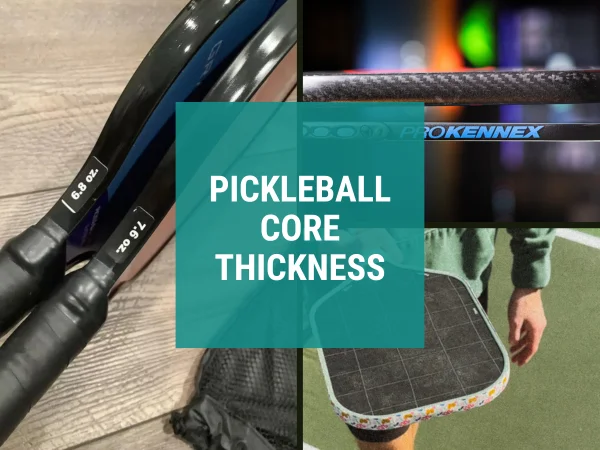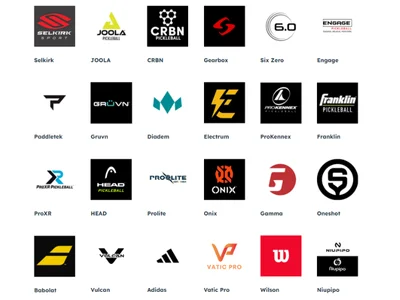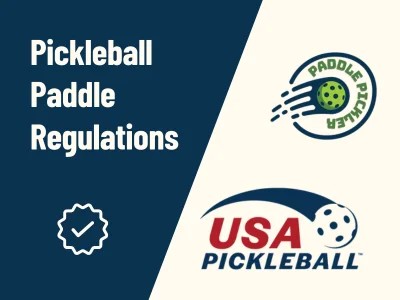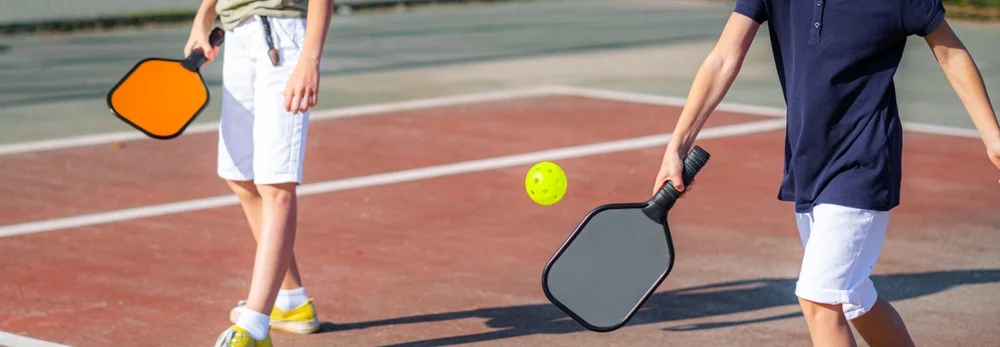
The pickleball paddle is the most important and necessary thing in every pickleball game. If you know how to choose a pickleball paddle, it is a great assistant for your victory in each game.
With various options available, from different types of material and weights to shapes and grip sizes, finding the ideal paddle might seem overwhelming.
This information will guide you through key considerations to choose a pickleball paddle that enhances your strengths and makes every game more satisfying.
What Make A Good Pickleball Paddle?
“WE BELIEVE THAT GREAT GAMES BEGIN WITH THE RIGHT EQUIPMENT” – The key component for playing pickleball with success is having a good paddle. Hundreds of different kinds of paddles are available now from numerous well-known pickleball paddle brands. So how can you determine if a paddle is good?
- A good paddle should be appropriate for your playing style and ability level.
- It will offer the perfect balance between individual comfort, control, and power.
- It will enhance your strengths and address your weaknesses on the court.
- The perfect paddle will ensure a harmonious combination of core and surface materials, paddle weight, shape, and handle size.
6 Steps To Selecting An Ideal Paddle For Beginner
There are only just two significant elements to take into account when selecting a paddle.
- First, your individual qualities (amount, degree, style, etc.)
- Second, the product characteristics (materials, shape, grip, etc.)
Do you think they’re any easier now? This section will determine these two elements using the following six steps:
- Playing Style and Skill Level
- Pickleball Paddle Weight
- Pickleball Paddle Core Materials
- Pickleball Paddle Surface Materials
- Pickleball Paddle Shape
- Grip Size and Handle Length
Step 1: Understand Your Playing Style and Skill Level
Understanding your playing style and skill level is the first step in choosing the best pickleball paddle. The three main categories of skill levels:
| BEGINNER | 1.0 to 2.5 Skill Rating |
| INTERMEDIATE | 3.0 Skill Rating 3.5 Skill Rating |
| ADVANCED | 4.0 Skill Rating 4.5 Skill Rating 5.0 Skill Rating |
| PRO | 5.5+ Skill Rating |
Note: Visit the USA Pickleball Player Skill Ratings rubric to understand the specific skills needed to achieve each level of player rating.
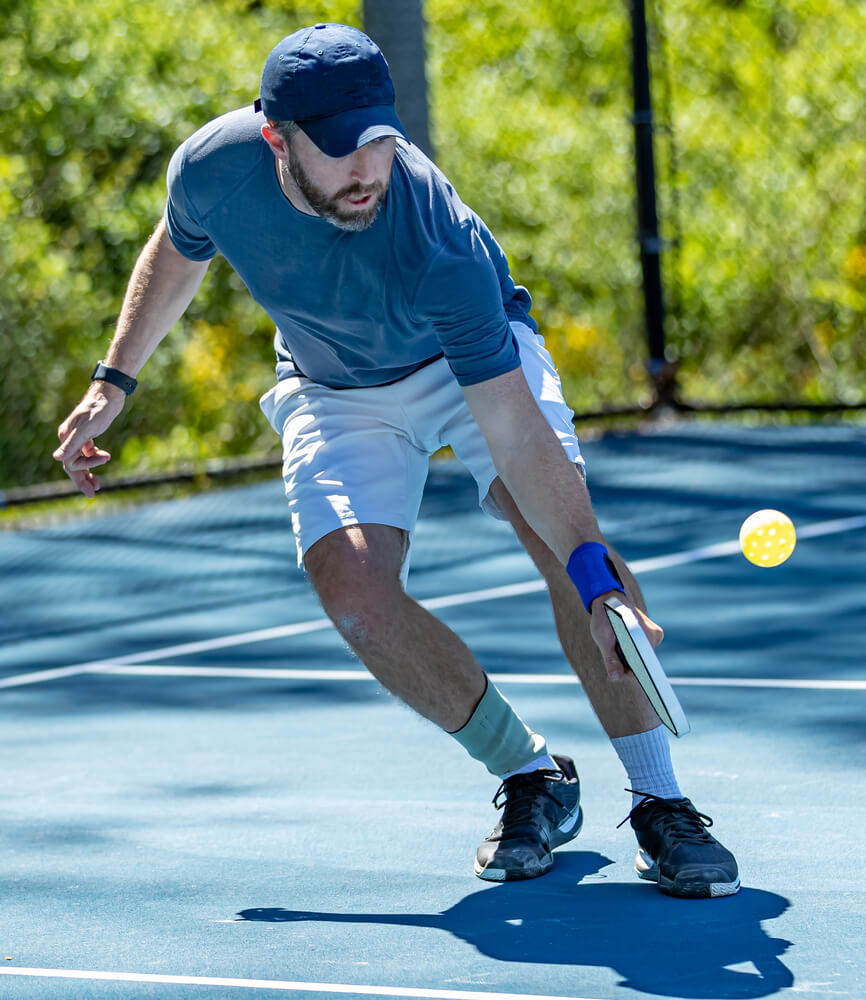
Beside, playing styles can include aggressive players, defensive players, and all-around players.
To make things easier, I will categorize them into three groups: players who prefer balance (beginners, all-around), players who prefer power (aggressive), and players who prefer control (defensive).
- If you are a balanced player, a paddle with a good mix of power and control qualities is appropriate. A midweight paddle with adaptability and reliable performance is an option.
- If you are a power player, opt for a paddle with maximum power. You should choose a heavier weight or a stiffer core.
- If you are a control player, use a paddle that focuses on precision and touch. Lightweight paddles with softer cores and surface materials, like fiberglass, can provide the accuracy and feel you need.
Step 2: Determine The Paddle Weight
Paddle weight often falls into three categories: lightweight, midweight, and heavyweight. Each weight category affects the paddle’s performance, feels during play, and how it interacts with the ball.
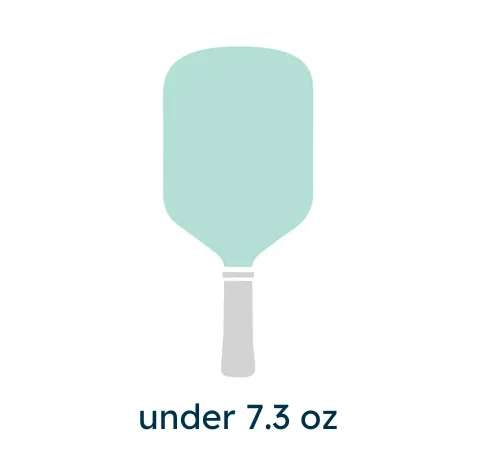
Lightweight Paddle
For: Control players
Lightweight pickleball paddles are ideal for players who focus on precision and quick reactions. They allow for excellent maneuverability leading to better control. Lightweight paddles are also easier to handle and reduce the risk of arm fatigue. Though they may offer less power than heavier paddles.
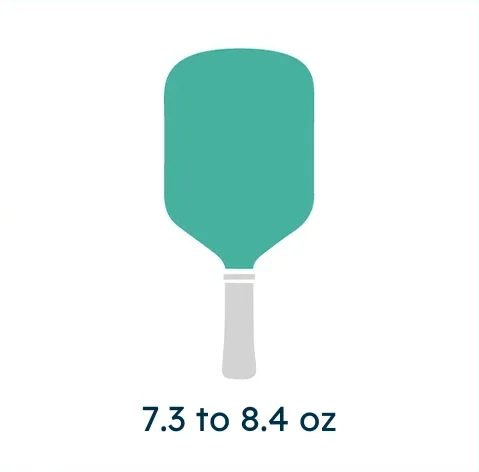
Midweight Paddle
For: Balanced players
Lightweight pickleball paddles are ideal for players who focus on precision and quick reactions. They allow for excellent maneuverability leading to better control. Lightweight paddles are also easier to handle and reduce the risk of arm fatigue. Though they may offer less power than heavier paddles.
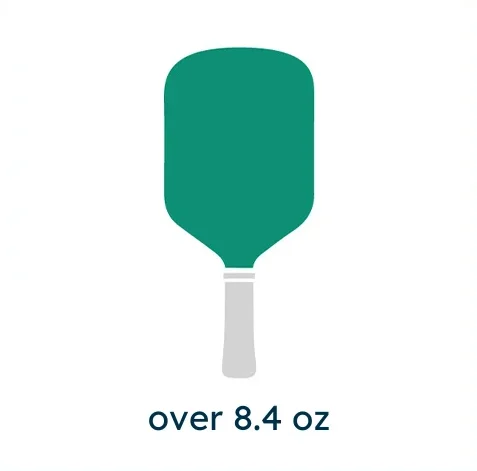
Heavyweight Paddle
For: Power players
Heavyweight pickleball paddle can provide greater power and stability behind your shots. Yet they can lead to more arm fatigue and may be less maneuverable.
Step 3: Paddle Core Materials
Core Materials
The core of a pickleball paddle is a crucial component that influences the paddle’s power, control, and durability. It is the inner part of the paddle, situated between two layers of surface material. Nowadays, most pickleball paddles have a honeycomb core structure to help with weight reduction and durability enhancement. The core’s main function is to absorb impact force and transmit the energy of each shot. Each core material offers distinct characteristics and benefits.
- Nomex Core: This is an extremely durable type of aramid fiber. Nomex cores are known for their durability and excellent power. It produces loud sound upon impact and provides a firm, responsive feel.
- Polymer Core (Polypropylene, Poly): This is the most common paddle’s core type. Polymer cores offer a good balance of power and control. It provides a softer touch and quieter impact than Nomex cores.
- Aluminum Core: Aluminum cores are also honeycomb-structured and are known for their lightweight and rigid nature. They provide excellent control and a firm feel. Yet aluminum cores may lack the power of other core materials and can be susceptible to deformation
- Composite Core: This core combines various materials to blend performance characteristics. This is a rather rare type of core. It can be more expensive but offers enhanced performance. For example, Paddletek’s Tempest series combines carbon fiber with a polymer core.
Core Thickness
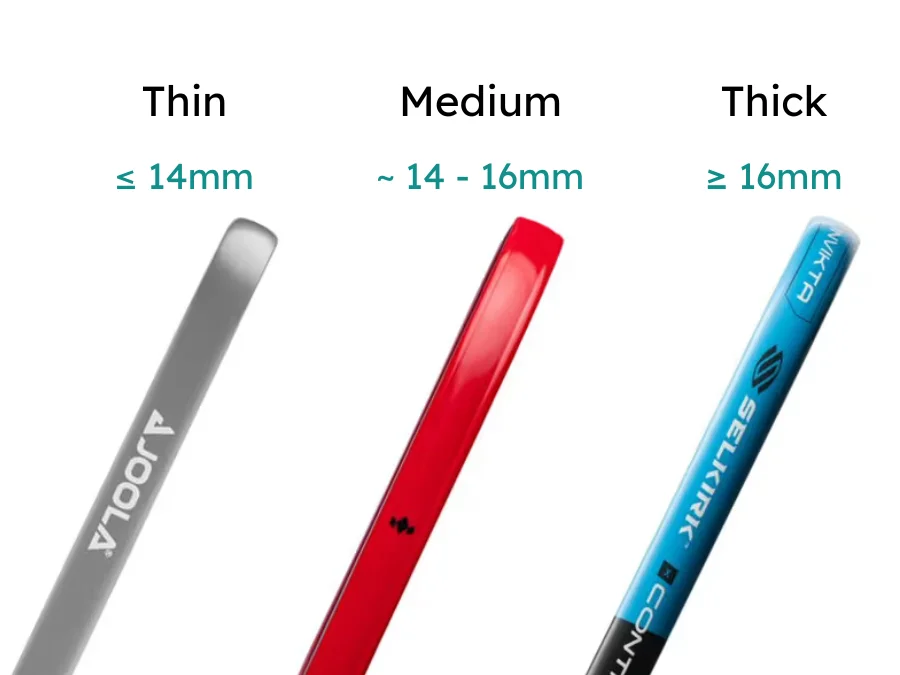
Core thickness in pickleball paddles is a key factor that affects the paddle’s performance. Core thickness can vary depending on the design and material of the paddle. The average core thickness for most pickleball paddles ranges from 8 mm to 20 mm. Yet the common thicknesses are 13mm, 14mm, and 16mm.
- Thinner Cores (less or equal to 14mm): Paddles with thinner cores tend to offer better control and a more responsive feel. The reduced thickness allows players to feel the ball more directly and make precise adjustments to their shots. Yet thinner cores may provide less power and can be less forgiving on off-center hits.
- Medium Cores (between 14mm and 16mm): Medium thickness provides a decent strength-to-control ratio. But this thickness is not very common.
- Thicker Cores (greater or equal to 16mm): Paddles with thicker cores generally provide more power and a larger sweet spot. The increased thickness allows for more material to absorb and distribute the impact force from the ball, resulting in a more powerful shot. Thicker cores, however, may slightly reduce the level of control compared to thinner cores, which can impact precision and touch.
Let getting one with a 16mm core if you’re just beginning off. This is the most popular and accessible fundamental type for the majority of players. It improves ball control, stabilizes the stroke, and reduces shaking when you hit off-center.
Step 4: Paddle Surface Materials
The outer layer of a pickleball paddle plays a crucial role in the performance of the equipment in aspects such as spin, feel, and touch. This part of the paddle is on the outer side and touches directly the ball during a game. Some of the common surface materials are Graphite, Carbon Fiber, Fiberglass, Hybrid, and Kevlar. Every material is special in its properties to fit specific types of players.
- Graphite: Graphite surfaces are renowned for their lightweight and responsive nature, offering excellent control and touch. Yet they are typically more expensive due to the advanced manufacturing processes involved. It is ideal for control-oriented players who rely on precision and touch.
- Carbon Fiber: Carbon fiber surfaces are similar to graphite but are typically stiffer, providing enhanced power and durability. It can transfer more energy to the ball, resulting in powerful shots. They are suitable for players who need a balance with an edge in durability and responsiveness.
- Fiberglass: Fiberglass surfaces are made from fine fibers of glass woven into a fabric, which is then bonded with resin. This material is more flexible and slightly heavier than graphite or carbon fiber. It offers a good mix of control and power and provides a more forgiving feel. Fiberglass is a popular choice for players who want a balance between power and control without compromising on durability.
- Hybrid: Hybrid surfaces combine multiple materials, such as fiberglass and carbon fiber, to optimize the benefits of each. For instance, a hybrid paddle might have a fiberglass face for added flexibility and a carbon fiber backing for increased stiffness and power. This combination allows manufacturers to fine-tune paddles to meet specific player needs.
- Kevlar: Kevlar is known for its exceptional strength and durability. Kevlar surfaces are less common in pickleball paddles but provide a unique combination of durability and control. Kevlar paddles are suitable for players who engage in heavy play and need a paddle that can handle intense matches without compromising on performance.
Pickleball Paddle Grit
Another small note when you choose a surface paddle is the grit of the surface. There tend to be 3 different types of grit:
- Painted grit
- Textures grit
- The face material’s grit (raw carbon fiber)
Pickleball paddle grit will impact the paddle’s spin. You should often have the maximum amount of grit. Still, surface roughness has its limitations. The USA Pickleball Equipment Standards Manual is available for your reference.
Step 5: Paddle Shape
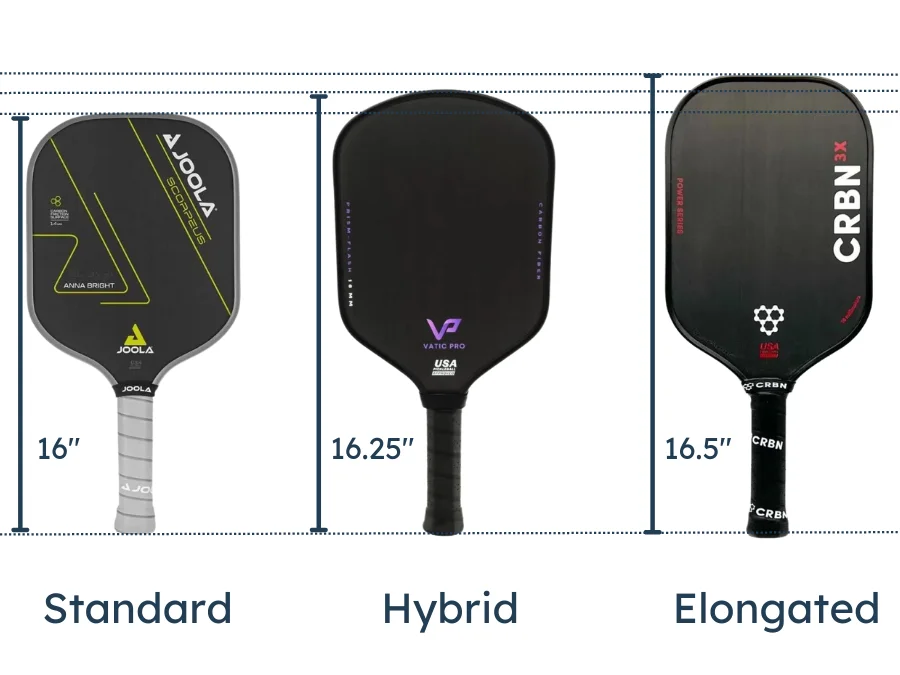
The shape of a pickleball paddle is a crucial factor that affects the playing experience. It impacts elements such as the sweet spot, maneuverability, and reach. Pickleball paddles come in many different shapes. The common sizes include the standard, elongated, and the widebody shape. Paddle shapes can differ in terms of width, length, and general design. Every shape has a different set of benefits and suits different types of players. There are also additional paddle shapes available, including bladed, teardrop, oversize, diamond, and square. You can learn more about pickleball paddle shapes.
According to official regulations from USAP, your paddle can not have a total length and width of more than 24 inches (width + length ≤ 24″). The paddle’s length must not be more than 17 inches.
- Standard paddles are the most traditional and widely used shape. Standard-shaped paddles have a balanced width and length, providing a well-rounded playing experience. They offer a larger sweet spot, making it easier to create consistent shots.
- Elongated paddles are wider and narrower than traditional paddles. This shape extends the paddle’s reach but smaller sweet spot and is more focused. The length of this type of paddle is usually about 16 inches or more. This is a great choice for players who focus on power.
- Wide-body paddles are shorter and wider than standard paddles. It offers a broader hitting surface. This shape increases the size of the sweet spot, making it easier to make contact with the ball. Wide-body paddles are often favored by beginners and players who prioritize control.
Step 6: Grip Size and Handle Length
Handle Length
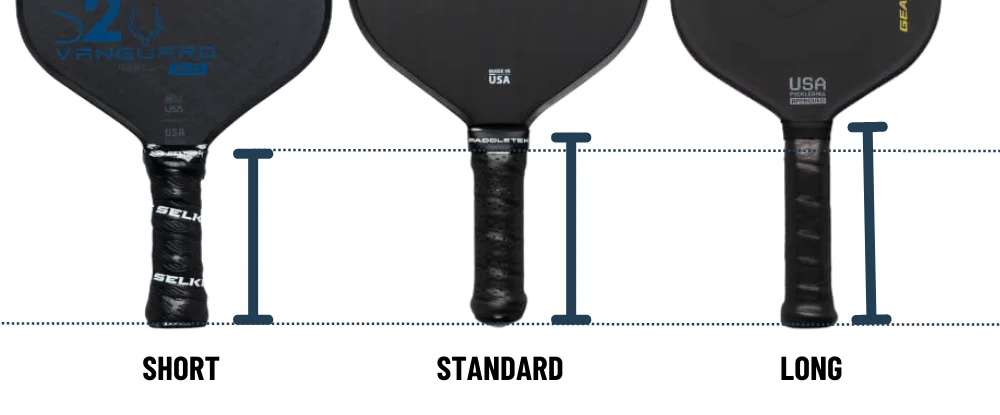
Handle length will influence reach, leverage, and comfort. Paddle handles often range from 4 to 6 inches in length.
- Short Handles (less than 4.75 inches): Shorter handles have a closer hand placement to the paddle face. This design can improve control and maneuverability, making it easier to execute quick, precise shots.
- Standard Handles (5 – 5.25 inches): Standard handles offer a balanced feel. It provides enough length for a comfortable grip while still allowing for good control and maneuverability. This length suits most players and playing styles.
- Long Handles (5.5 inches and above): Longer handles offer extra reach and leverage. This can enhance power and provide better control for backhand shots. Yet it may slightly reduce maneuverability.
Grip Size
Grip size is a crucial element directly impacting a player’s comfort and control. Grip size means the circumference of the paddle handle. Choosing the correct grip size can prevent discomfort, reduce the risk of injury, and enhance your overall gameplay. Grip sizes typically range from 3.875 to 4.5 inches in circumference.
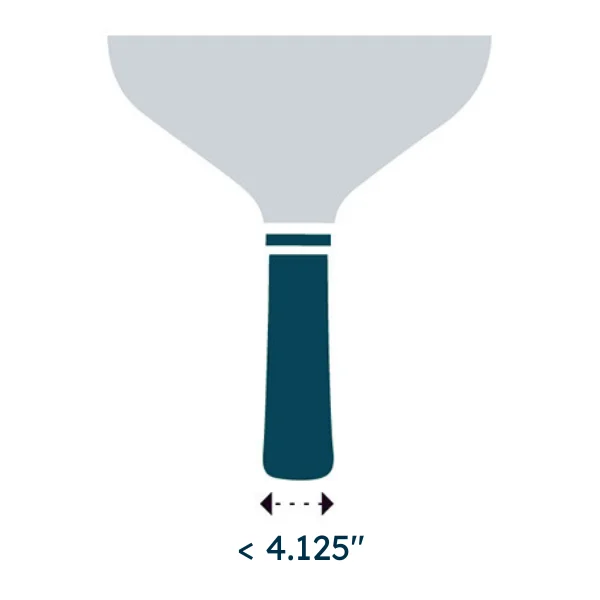
Small Grip (less than 4.125 inches)
Provides better wrist action and more control over spin. They are ideal for players with smaller hands.
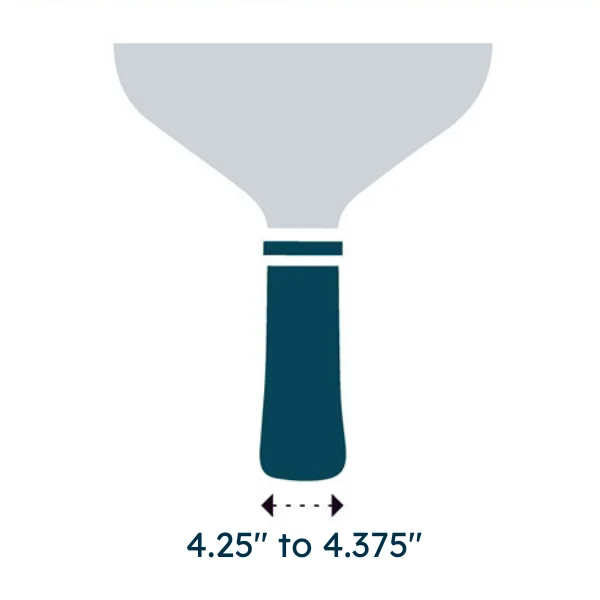
Medium Grip (4.25 to 4.375 inches)
Offers a balance between control and power, suitable for a wide range of players.
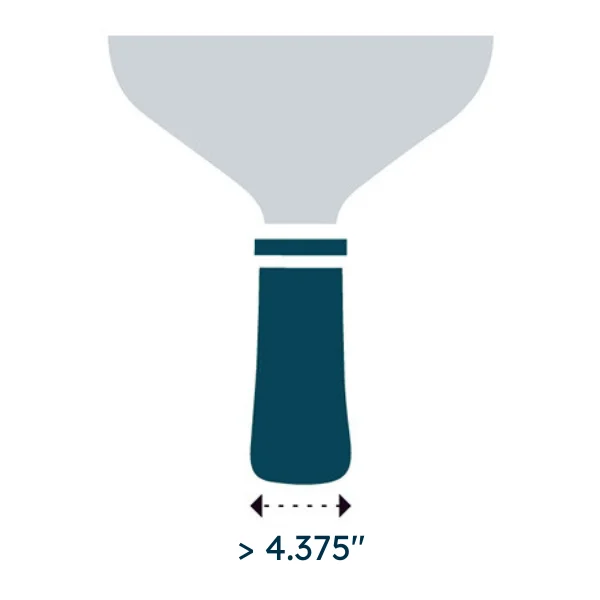
Large Grip (4.375 inches and above)
Ensures a secure hold and reduces paddle twisting. They are best for players with larger hands or those who prefer a firmer grip.
Note: If you unintentionally buy a paddle with a small grip circumference, you can use a cushion to enlarge it.
Summarize Table
| Key Factor | All-round players | Power-players | Control-players |
|---|---|---|---|
| Weight | Midweight | Heavyweight | Lightweight |
| Core Materials | Polymer | Nomex or Aluminum | Polymer or Aluminum |
| Core Thickness | Medium thickness (12 – 14mm) | Thinner core(less than 12mm) | Thicker core(over 14mm) |
| Surface Materials | Composite or Graphite | Carbon Fiber or Kevlar | Fiberglass or Graphite |
| Shape | Standard or Widebody shape | Elongated shape | Widebody shape |
| Grip Size | Medium Grip | Large Grip | Small to Medium Grip |
| Handle Length | Standard Handle | Long Handle | Short to Standard Handle |
Pro Tips On Choosing An Ideal Pickleball Paddle
Besides the six steps outlined above, there are many more factors to consider when choosing a paddle. I gained these tips after many years of playing pickleball and receiving lots of advice from pro players. When selecting your dream paddle, they could be useful to you.
#1. Brand and Technology
Reputable and established brands often invest in advanced technologies and rigorous testing to produce high-quality paddles. You should try a paddle with innovative features like vibration dampening, edge guards, and specialized grip designs. It is very different from regular paddles.
You should also compare warranty periods between different brands. Most brands offer a six-month warranty. Some warranties are only one year, while others are lifetime. Yet, you should consider buying paddles that have a guarantee period of fewer than 7 days.
#2. Price Range and Budget
Paddles are available at diverse costs, from low-cost options to high-end professional ones. Determine your budget before buying and select a paddle that meets performance requirements while remaining inside your budget. Keep in mind that better materials and technology often come with greater prices. If you don’t need too many extra features in your paddle, a mid-range paddle is an excellent option that won’t break the budget.
#3. Testing and Trying Paddles
Testing many types is a great method to discover the ideal paddle. Numerous local sports shops and groups provide trial programs. Take note of how each paddle feels in your hand, including its weight, balance, and general performance.
#4. Considerations for different court surfaces – indoor vs. outdoor pickleball
The playing surface can determine the paddle you use. Surfaces on indoor courts tend to be smoother. Outdoor courts could be more rugged and weather-dependent. These two types of courts also use different balls.
Paddles with textured surfaces and robust edges may be suited for outdoor courts. Meanwhile, controllable paddles might be a better option indoors.
#5. Importance of paddle care and maintenance
By giving your paddle regular maintenance, you may prolong its life and maintain its efficiency. To get rid of dirt and debris, you should clean the paddle face regularly. Furthermore, you ought to check the edge guard for any damage. Keep in mind placing your paddle under a cover for protection and to keep it out of the elements.
In Short
A vital first step in improving your play and pleasure of pickleball is selecting the right paddle. To select a perfect paddle, you must first evaluate your personal preferences (style, level, budget, etc.) and then match them with the characteristics of the paddle (material, form, price, etc.). Following the 6-step recommendations above will put you on the path to finding the ideal paddle.
Novices should begin with a paddle that strikes a balance between control and power. As you progress, you may prefer paddles that improve various areas of your game, such as power or control. Don’t be afraid to try out various paddles until you discover the one that feels most comfortable. At all times prioritize comfort and adaptability over cost. You’ll find a paddle that matches your style and helps you succeed on the court.
References:
- Usapickleball.org. Available at: https://usapickleball.org/docs/eec/Equipment-Standards-Manual.pdf (Accessed: August 8, 2024).
- Dickssportinggoods.com. Available at: https://www.dickssportinggoods.com/rc/pickleball-paddle-buying-guide (Accessed: August 8, 2024).

